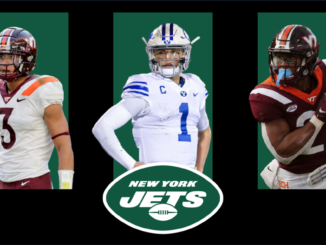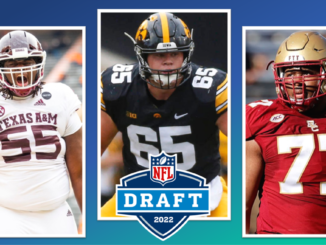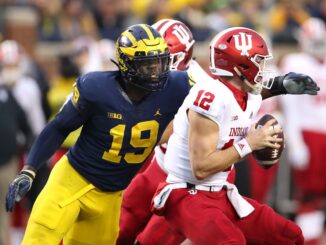There might not be a generational prospect like Kyle Pitts in this year’s tight end class, but it isn’t without quality. It offers a number of dynamic receiving weapons, as well as some talented all-rounders and players with intriguing upside. Here are my top ten tight ends in the 2022 NFL Draft class.
1. Trey McBride – Colorado State (6-3, 246, Senior)
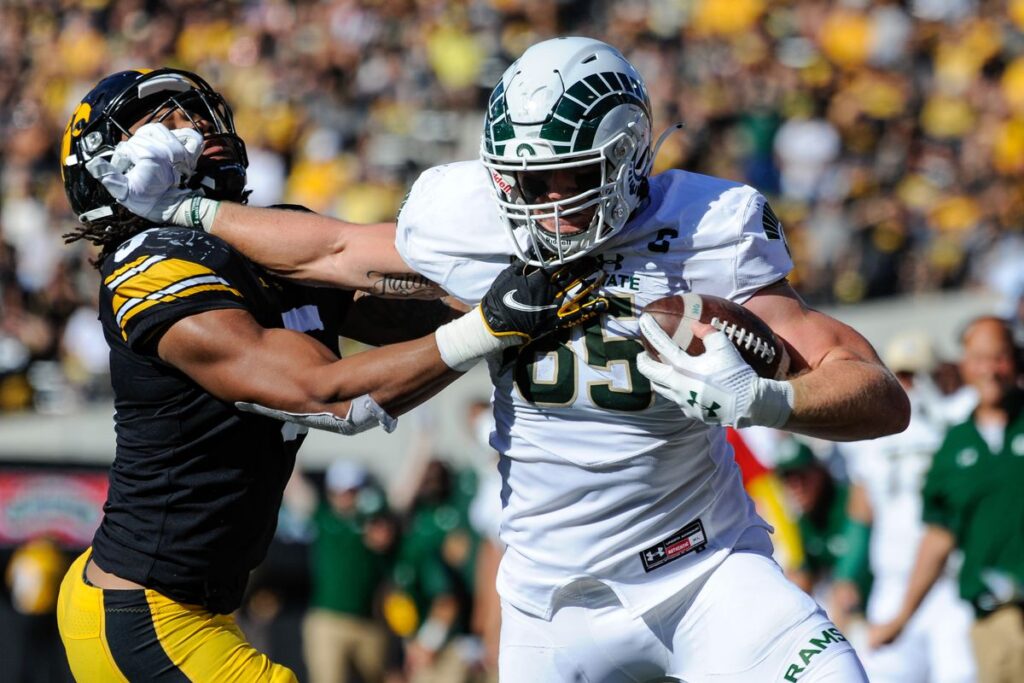
Pros: Possesses arguably the best hands in the entire draft class. So reliable in the passing game and will haul in anything within his frame, with no problems whatsoever with drops. Comfortable running a diverse route tree and has experience working from multiple alignments. Capable as a blocker, with good technique and core strength to create movement at the line of scrimmage. Tonnes of production at Colorado State and has experience being the focal point of an offense, accounting for over a third of the team’s targets and yardage in 2021.
Cons: Not the most dynamic athlete and is much better working in a straight line. Game speed didn’t match his testing numbers and he might not be the easiest separator at the NFL level. This also limited his ability to create yardage after the catch, where he lacks the wiggle to make defenders miss in space. Small catch radius thanks to short arms. Lacks much experience working zone blocks in the running game.
Projection: 2nd round
2. Greg Dulcich – UCLA (6-4, 243, Junior)
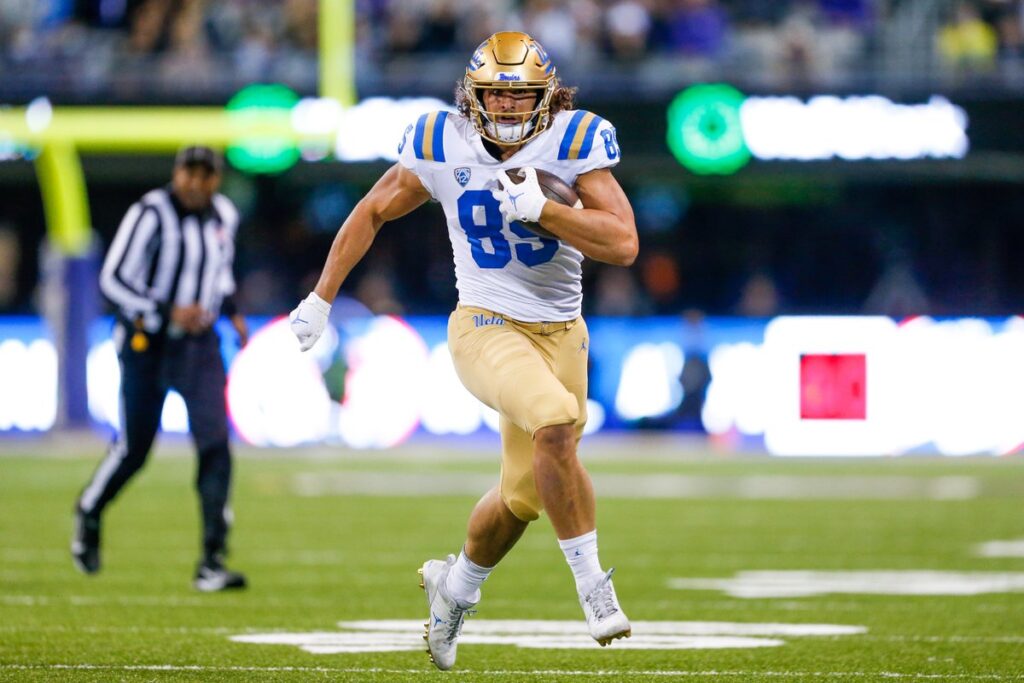
Pros: Background as a wide receiver shows up on tape. Has good speed to separate on full speed routes and is excellent at attacking the seam. Presents a big-play threat, averaging 17.6 yards per reception throughout his college career. Adept at finding holes in zone and settling. Capable of making defenders miss after the catch and has the long speed to take catches to the house. Reliable hands, with just five drops on 77 career catchable targets. Showcases good willingness and play strength as a run blocker.
Cons: Is a little undersized for a traditional NFL tight end. Blocking technique requires some refinement, with his poor hand placement limiting his ability to sustain. Also had real issues when asked to be a pass protector as an inline tight end. Does have a tendency to be a little upright as a route runner, which can inhibit his ability to generate sink in his hips at the top of routes.
Projection: 2nd round
3. Cade Otton – Washington (6-5, 247, rs-Senior)
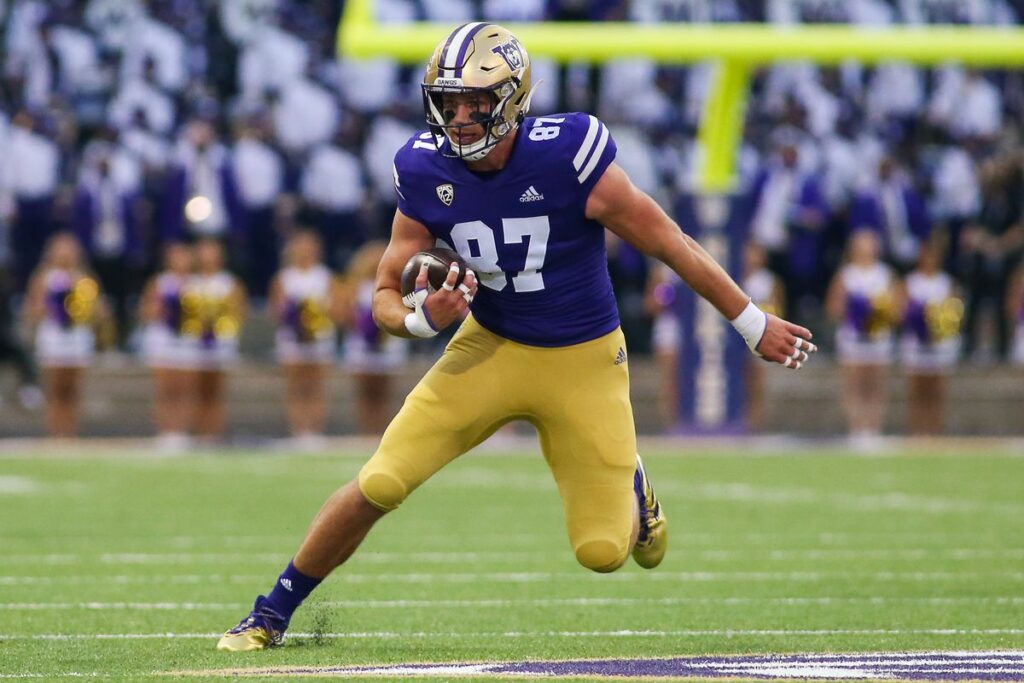
Pros: Smooth and refined route runner who has experience running a fairly diverse route tree in college. Generates good sink in his hips at the top of the route to create late separation. Shows the ability to manipulate defenders with subtle footwork and head fakes. Active hands at the catch point and is reliable working within the strike zone. Ability to adjust to poor ball placement is impressive. Perhaps his best work comes as a blocker, with the ideal combination of strength and technique to be an asset inline.
Cons: Not a hugely impressive athlete. Doesn’t have top tier long speed but isn’t overly twitchy in short areas either, leaving him reliant on technique to win in the passing game. Used almost exclusively as a receiver in the short passing game, with a career ADOT of just 6.8 yards. Has never had a high volume receiving role, with just 91 receptions in four seasons. One of the older tight ends in the class at 23 years old.
Projection: 2nd round
4. Jelani Woods – Virginia (6-7, 253, rs-Senior)
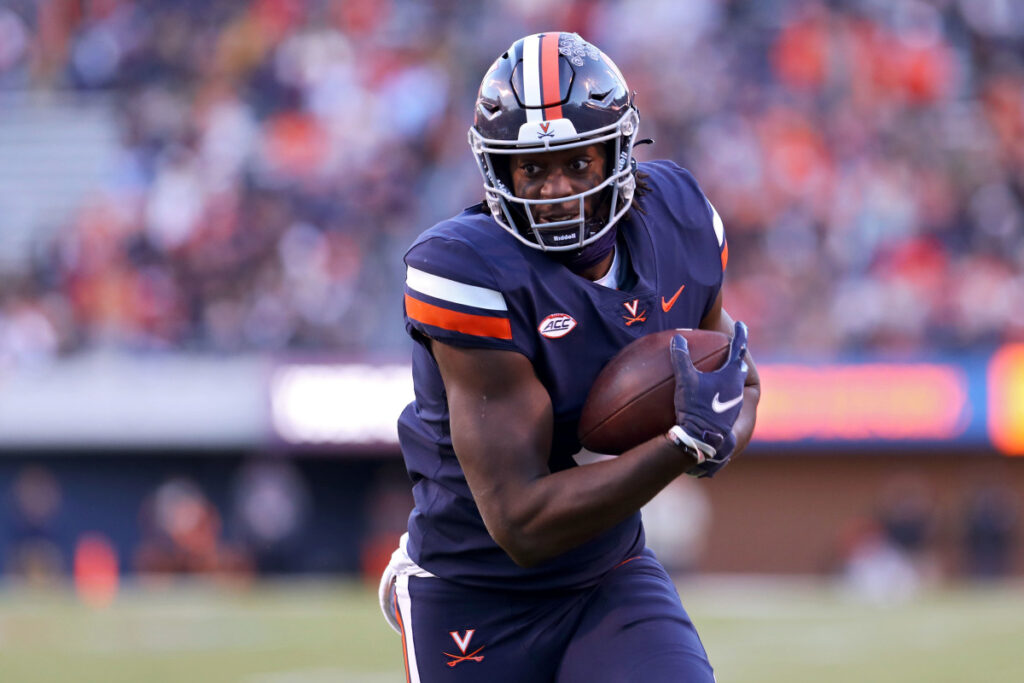
Pros: Possesses a truly special combination of size and athleticism. Posted a perfect 10 Relative Athletic Score, making him the most athletic tight end prospect since 1987. Has the long speed to be a threat up the seam and is capable of working all three levels of the field. Absolutely huge catch radius and is dominant in contested catch situations. Able to churn through contact after the catch. Has plenty of experience as a blocker, with the length and core strength to get the job done.
Cons: He’s more of a long strider than a twitchy athlete and his size means he’s never going to be overly dynamic in and out of his breaks. Inexperienced as a receiver, with just one season of notable passing game production. Still learning the nuances of route running. Hands are generally solid but he will bobble some targets and rely on body catches. Still needs plenty of development, which is a concern given that he will turn 24 years old as a rookie.
Projection: 3rd round
5. Isaiah Likely – Coastal Carolina (6-4, 245, Senior)
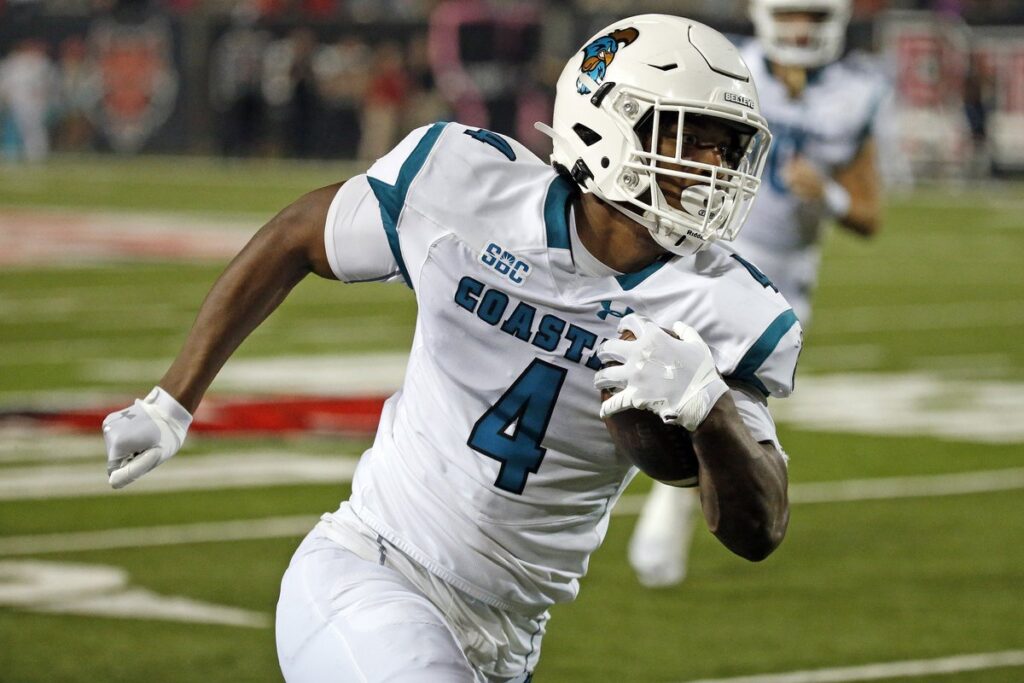
Pros: Dynamic weapon in the passing game. Has good short area quickness to separate on underneath routes and shows the second gear to win off the vertical tree. Showed the ability to make big plays downfield and logged 15.4 yards per catch during his college career. Smart after the catch and is capable of making defenders miss in the open field, forcing 20 missed tackles on 89 receptions over the last two seasons. Competent blocker on the move and is adept working as a H-back.
Cons: Has a lean build and lacks desired core strength to be an inline tight end at the NFL level. Also lacks ideal length, which caused problems with his ability to sustain blocks in the running game. Issues with length carry over to the passing game, where he has a small catch radius and struggles to work outside his frame. Not particularly refined as a route runner, lacking the desired nuance to his game.
Projection: 4th round
6. Chigoziem Okonkwo – Maryland (6-2, 238, Senior)
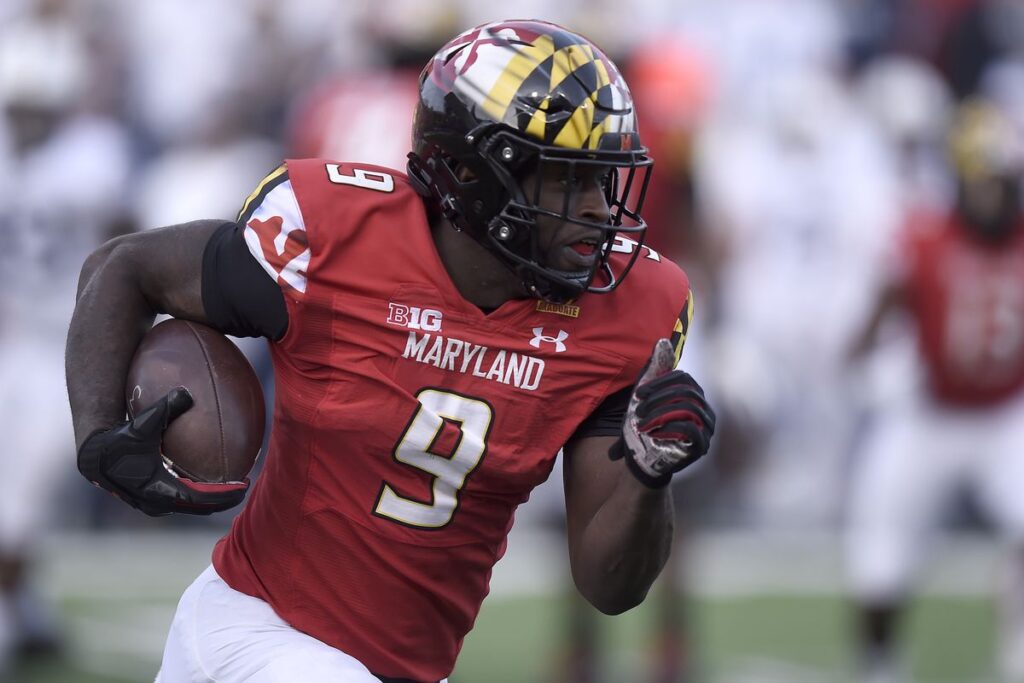
Pros: Excellent athlete, with good short area explosiveness and the long speed to threaten defenses vertically. One of the better YAC threats in this tight end class. Has the quickness to pull away from defenders in the open field and enough wiggle to his game to make them miss. Also comfortable bowling them over and churning out additional yardage the hard way. Reliable hands at the catch point. Played mainly as a H back but has a scheme-versatile skillset.
Cons: Still a very raw and underdeveloped prospect. Ran a very basic route tree and was generally used on screens and flat routes. Doesn’t show any ability to manipulate defenders or vary his pacing to create separation. His ability as a blocker is also a work in progress, with issues sustaining and finishing blocks in the running game. Lacks ideal size for an all-around tight end role. Medical issues that need evaluating, having missed the entire 2020 season due to myocarditis.
Projection: 4th round
7. James Mitchell – Virginia Tech (6-4, 249, rs-Junior)
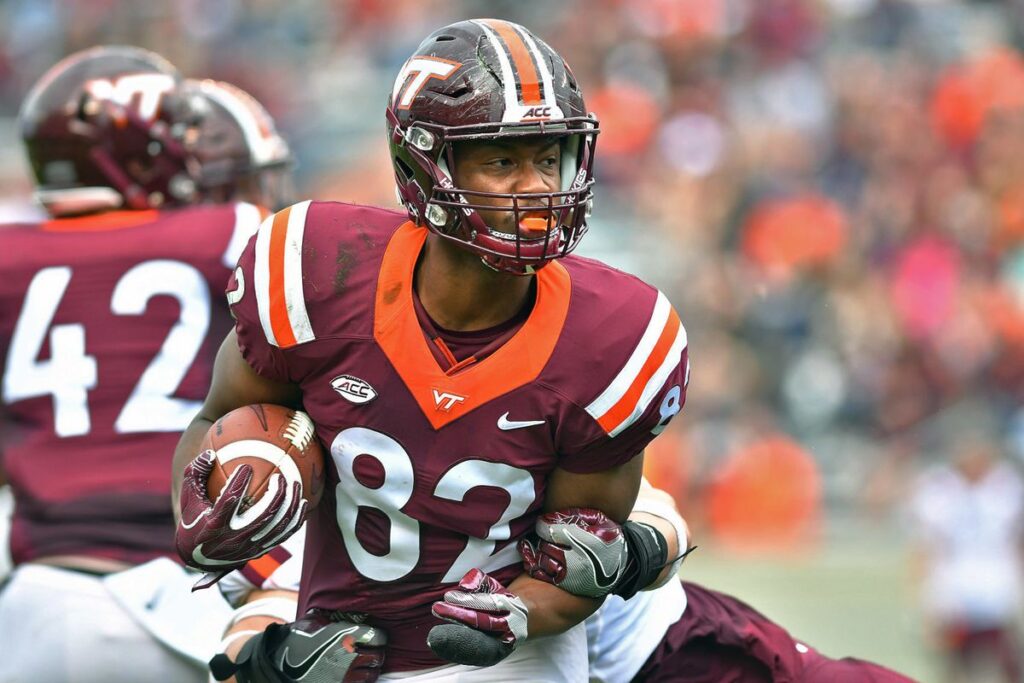
Pros: Has a background playing wide receiver and it shows on tape. He is quick in and out of his breaks, with the speed to create separation and win downfield. Was a consistent big play threat in college, averaging 16.4 yards per reception on his 50 career catches. Reliable hands at the catch point and has no issues working outside his frame. Quick to get upfield and churn out extra yardage, averaging 10.5 yards after the catch in college. Showcases good effort as a run blocker.
Cons: More fluid than sudden as a route runner and you’d like to see some more sink in his hips at the top of his routes. Doesn’t force many missed tackles after the catch, with just five on his 50 career receptions. Play strength is decent but nothing special. Technique as a blocker could certainly use a little refinement. Coming off a torn ACL that saw him miss most of his final season.
Projection: 5th round
8. Charlie Kolar – Iowa State (6-6, 252, rs-Senior)
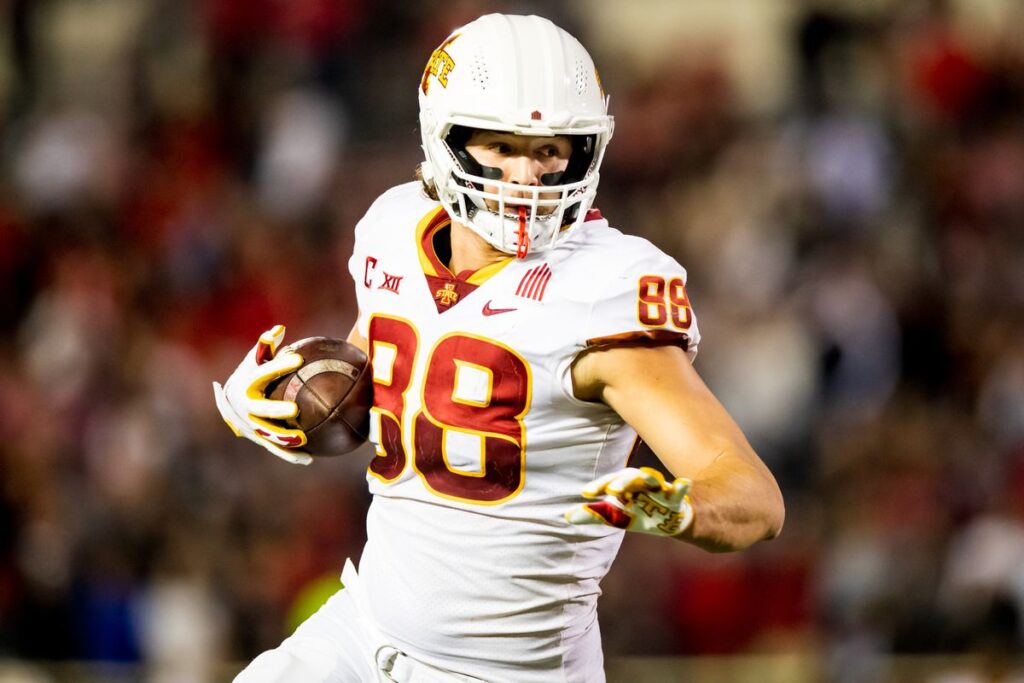
Pros: Good height and length. Has soft hands and is incredibly reliable working within the strike zone, logging just five drops on 174 career catchable targets. Very effective in contested catch situations, knowing how to shield the football from his opponents. Put up some impressive athletic testing numbers in the pre-draft process. Outstanding production through the years, with three First Team All-Big 12 nods and three spots as an All-American.
Cons: Testing numbers didn’t show up on tape. Lacks a second gear to threaten up the seam and didn’t show any explosiveness to really separate from defenders at the top of his routes. Lean build and can struggle with more physical defenders. Not much of a threat to create his own yardage after the catch. Lacks ideal power and technique to be a force as a blocker.
Projection: 5th round
9. Daniel Bellinger – San Diego State (6-4, 253, Senior)
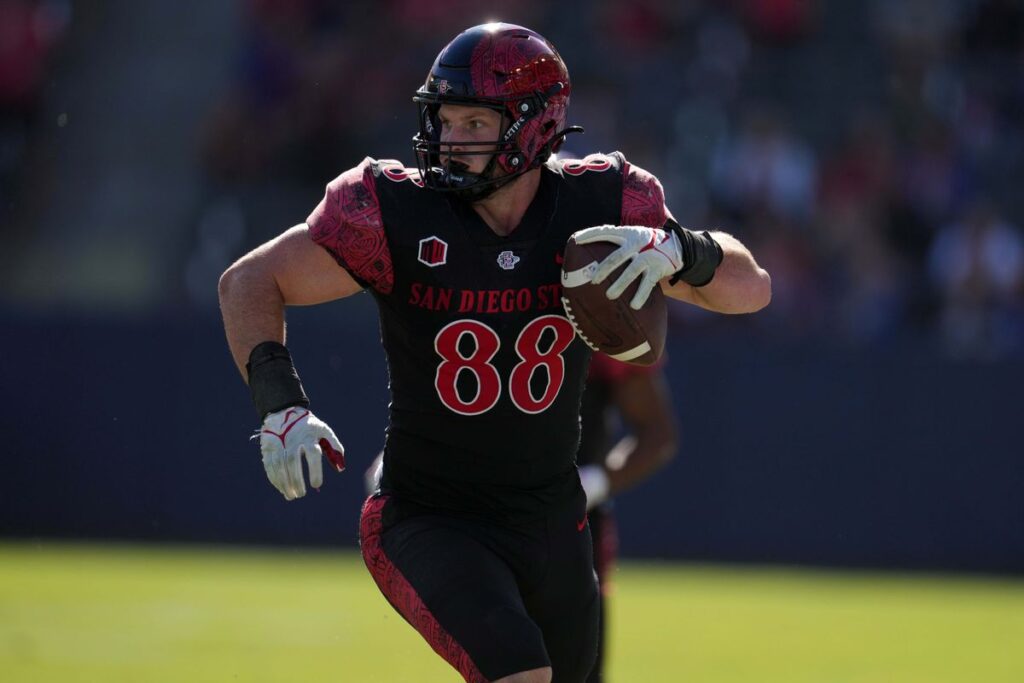
Pros: Has a good combination of size and speed that should translate nicely to the NFL level. Route running is solid, with good change of direction ability to win out of his breaks. Showcases big and powerful hands at the catch point and had no issues whatsoever with drops, logging just three on 71 career catchable targets. Comfortable when asked to work as a blocker, with good hand placement and footwork to sustain.
Cons: Not a particularly translatable role, with an ADOT of just 3.7 yards in 2021. As a result he needs to work on expanding his route tree and adding more variation to his breaks to help him create separation. Not particularly elusive after the catch and forced just five missed tackles on 68 career receptions. Production in college was generally underwhelming, with just 767 yards and five touchdowns in four years.
Projection: 5th round
10. Jeremy Ruckert – Ohio State (6-5, 252, Senior)
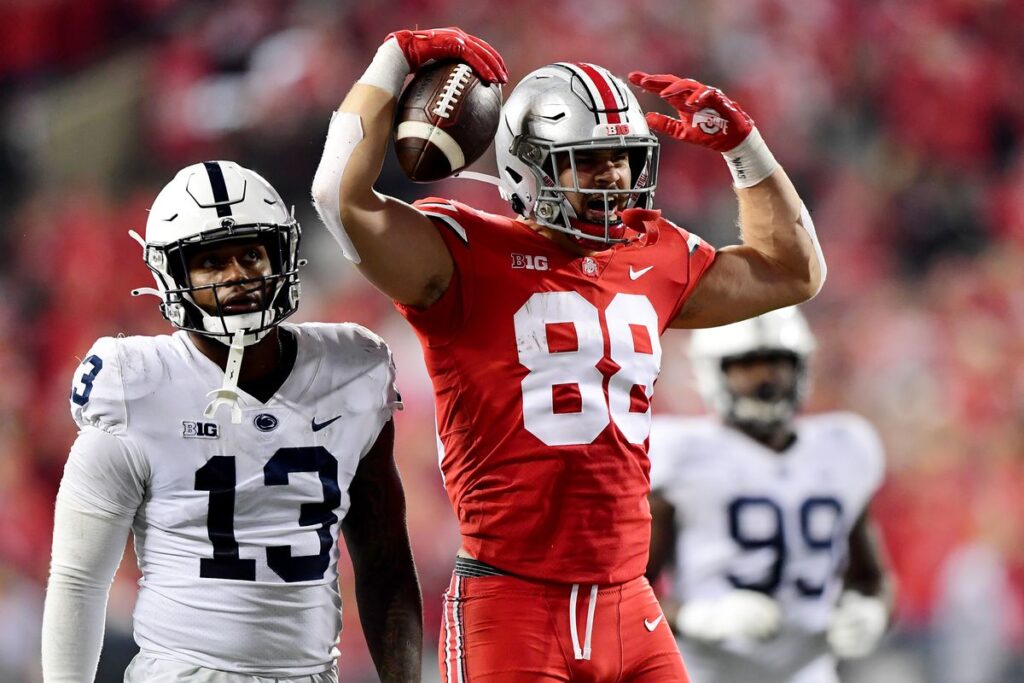
Pros: Does show some promise as a route runner, knowing how to vary his pacing and use footwork to manipulate defenders. Reliable hands, with a good catch radius and concentration through the catch process. Logged a drop rate of just 3.6% throughout his career. Proven weapon in the red zone, with 12 of his 54 career catches going for touchdowns. Smart player who knows when to settle and find soft spots in coverage.
Cons: Not athletic. Slow and plodding in the passing game with no ability to separate. This lack of dynamism extends to his production after the catch, which remains limited. Barely featured as a pass catcher either, with just 54 catches for 615 yards in four seasons. Over-extends as a blocker and has noticeable issues sustaining. Not sure he has a single trump card to hang his hat on in the NFL.
Projection: 5th round
